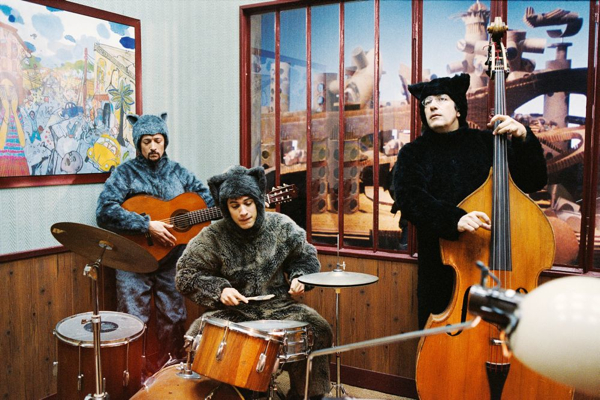Movie review by Greg Carlson
While “The Science of Sleep” is nowhere near as fulfilling as director Michel Gondry’s exquisite “Eternal Sunshine of the Spotless Mind,” it will satisfy viewers seeking something entirely different from the rest of the fare on the current movie menu. Crammed with Gondry’s inimitable sense of handmade craftsmanship, “The Science of Sleep” operates in that suspended space between dream and reality, past and present. A kaleidoscopic nostalgia trip that instantly signals a potent layer of autobiography, Gondry’s film makes up in brain-bending creativity what it lacks in narrative unity.
With “The Science of Sleep,” Gondry steps out as his own screenwriter, and the result clearly owes something to previous collaborator, fellow visionary, and “Eternal Sunshine” scribe Charlie Kaufman, whose storytelling is tighter, if no less bizarre. Like “Eternal Sunshine,” “The Science of Sleep” shifts restlessly between the actual and the fantastic to the extent that the border between the two is uncertain to characters, audience members, and perhaps Gondry himself. The disorientation caused by this blurring effect is tempered by the film’s joyful belief in the power of invention.
As the movie gets underway, Stephane (Gael Garcia Bernal), an immature artist, moves to Paris from Mexico to take a position at a printing company. Despite his mother’s assurance that the job requires artistic skill, Stephane immediately realizes that he’ll be just another frustrated office drone. Fortunately, the other employees, including the amusingly vulgar Guy (Alain Chabat), break up the tedium of old fashioned cutting and pasting. Stephane also strikes up a friendship with Stephanie (Charlotte Gainsbourg), the girl who lives across the hall, and their tentative, awkward flirtations provide the movie with its central thematic ballast.
When it comes to addressing issues of love and romance, Gondry presents a curious world where Stephane’s paralyzing fear of rejection is masked by his eagerness to operate in the more comfortable space where his childlike constructions and assemblages are admired and appreciated. When grown-up feelings threaten to undermine the delicately balanced equilibrium of his fragile worldview, Stephane retreats to the safety of what he knows best: odd little inventions like a one-second time machine or projects that require items like buttons, felt, cardboard tubes, cotton, and cellophane. Stephanie, a dreamer in her own right, takes pleasure in sharing Stephane’s passion for do-it-yourself entertainment, but Stephane’s emotionally arrested development seems to block out any hope that they might be more than friends.
For all its whimsy, “The Science of Sleep” evokes feelings of longing, regret, and sadness. Stephane’s infantilism comes to bear its fangs, and the ugliness of his behavior can make one wince with familiarity at the way that we can ferociously derail a friendship when attraction goes unrequited. In “The Science of Sleep,” adult relationships are incompatible with the precious pixie dust that fuels the world of the very young. In this worthwhile movie, Gondry has located the intersection between retaining the unfiltered wonder of childhood and the butterflies that come with being a fully-grown person. Much like the contents of the protagonist’s cranium, Gondry’s film leaves us with the bittersweet memory of images suspended between the way things are and the way we want them to be.
